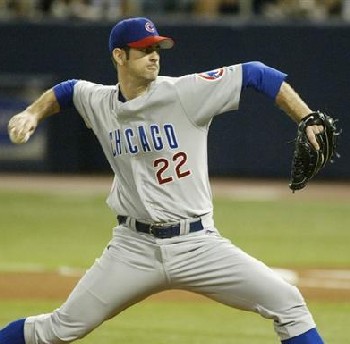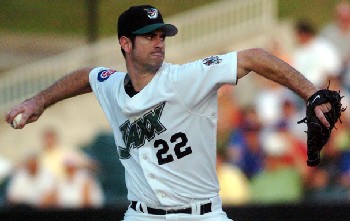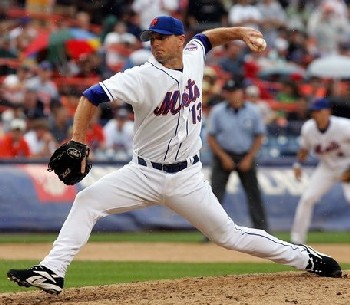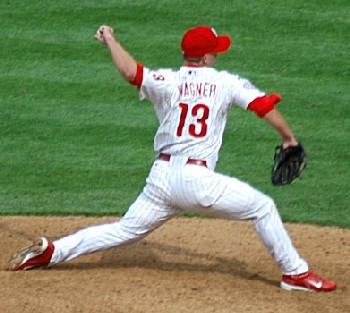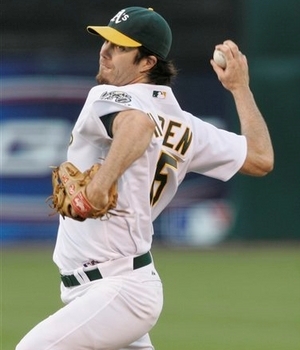| ChrisOLeary.com | ||
| ChrisOLeary.com > Rethinking Pitching > Essays > Scap Loading | ||
2007.8.1Compared to how it was taught when I wrote this piece, Scap Loading is now being taught differently and, in my opinion, dangerously. As a result, instead of arms being UP at foot plant, you are seeing more and more pitchers whose arms are FLAT at foot plant. For more information on why that is bad, see my new piece on... ...and my related pieces on... Scapular LoadingThe topic of scapular loading (aka, Scapula Loading, Scap Loading, Winged Arm Action, the Inverted W, or simply the "M") has come up in a number of discussions on the message boards that I frequent, and I thought I ought to discuss my view of scapular loading. The term "Scapular Loading" — which in days gone by was described by the term "Proud Chest" — was coined by Paul Nyman to describe something that high level pitchers often do and that may be related to throwing at a high velocity. 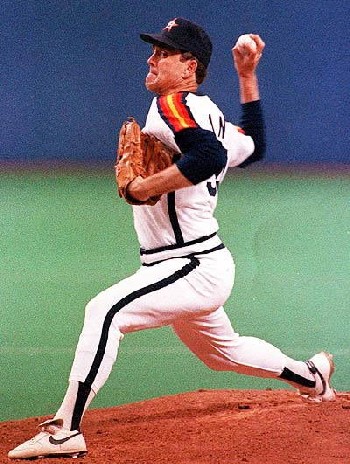
Nolan RyanIf you look at photos of most major league pitchers, like Nolan Ryan, you will see that at some point in their motion, usually just before their Pitching Arm Side (PAS) forearm is about to pass through the vertical, high-cocked position and their shoulders start to rotate, they take their elbows behind their back and pinch their shoulder blades (or Scapulae) together. Paul Nyman's theory is that this action helps to load the muscles on both sides of the shoulder and enables a pitcher to throw harder. While I will not disagree that many pitchers seem to do this, I do question whether it has the effect that Paul Nyman thinks it does (due to the relatively small size of the muscles involved). As a result, Scapular Loading is not something that I focus on when teaching or evaluating pitchers. However, I believe that there appears to be a safe way to load one's scaps and an unsafe way to load one's scaps.
Again the comments below were written several years ago, when the way to scap load was with the arms UP. Now, pitchers are scap loading with their arms FLAT, which is a huge problem. The Safe Way to Scap Load?In my opinion, the safe way to load one's scaps is to always keep the elbows below the level of the shoulders as Nolan Ryan is doing in the photo above. I believe that this, which I call the "W", reduces the level of the strain that are put on the ligaments that hold the shoulder together and reduces the amount, and force with which, the PAS upper arm externally rotates. Randy Johnson 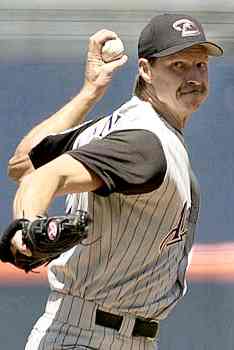
Randy Johnson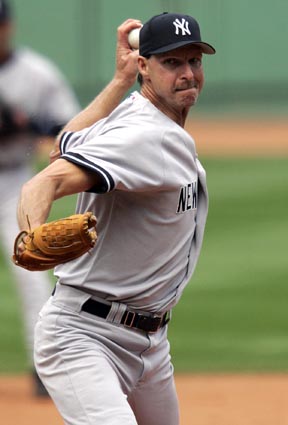
Randy JohnsonThe two photos above of Randy Johnson show exactly what I mean. Notice that while his elbows are behind his back, they are also well below the level of his shoulders. 
Randy JohnsonYou can see the same thing in the the photo above of Randy Johnson, which is from the same moment but from a different angle. Again, notice that his elbows are behind his back but well below the level of his shoulders during the process of Scapular Loading. 
Randy JohnsonAbove is a third view of Randy Johnson from the same moment in time that shows the exact same thing. Randy Johnson's elbows are behind his back but below the level of his shoulders. 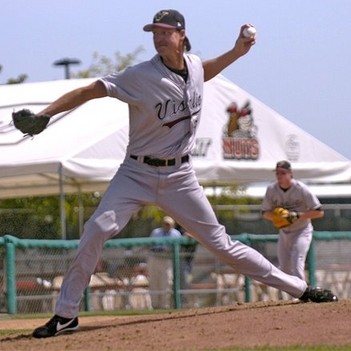
Randy Johnson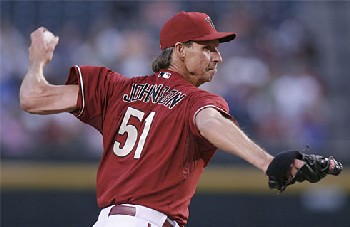
Randy Johnson
Randy Johnson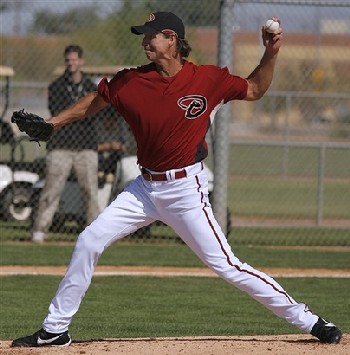
Randy JohnsonTo prove that this is something that Randy Johnson still does, above are four photos of him from early on in the 2007 season. Notice how his PAS elbow always stays below the level of his shoulders. 
Randy JohnsonYou can see the same thing in the above video clip of Randy Johnson. Notice how his PAS elbow always stays below the level of his shoulders until after his PAS forearm has passed through the vertical high-cocked position. His PAS elbow is at the level of his shoulders at the Release Point, but that is normal. 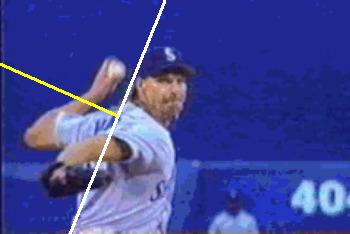
Randy JohnsonFor those of you who are not clear what I am talking about, here is a frame from the clip above. In this frame, the solid white line represents the degree to which Randy Johnson's torso is tilted forward toward 1B. The solid yellow line is this frame represents the level of his shoulders as measured by the Acromial processes. As you can see, as Randy Johnson is at his point of maximum Scapular Loading and his PAS upper arm starts to externally rotate, his PAS elbow is well below the level of his shoulders. Probably 6 to 9 inches by my count. Greg Maddux 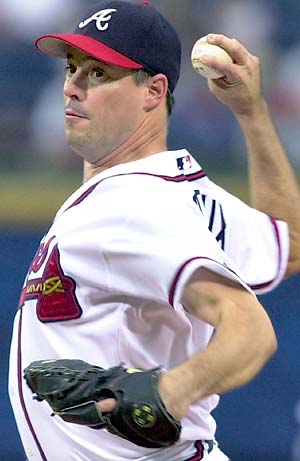
Greg MadduxIn the photo above of Greg Maddux, notice the same pattern as in the arm action of Randy Johnson. While his elbows are indeed behind his back, they are also well below the level of his shoulders. 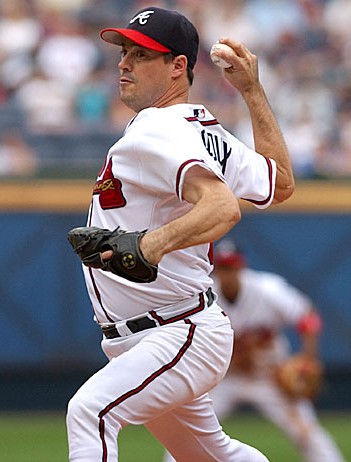
Greg MadduxAbove is another photo of Greg Maddux taken at almost exactly the same moment. Again, notice that while his elbows are indeed behind his back, they are also well below the level of his shoulders during the process of Scapular Loading. 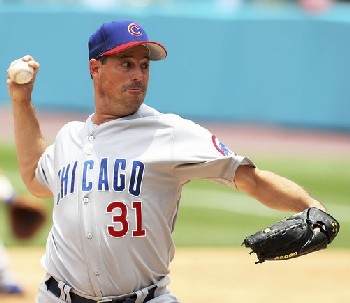
Greg MadduxAbove is another photo of Greg Maddux taken from a slightly different angle that shows the same thing. Notice that his elbows are behind his back, but well below the level of his shoulders. 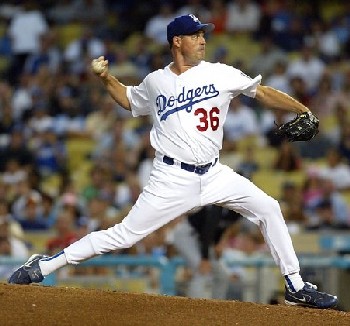
Greg MadduxAbove is a third view of Greg Maddux, this time taken from the side. Again, notice how low Greg Maddux's PAS elbow is relative to the level of his shoulders. 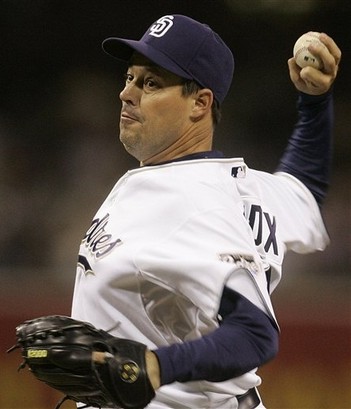
Greg MadduxAbove is a recent view of Greg Maddux taken from early May 2007. You can see that he does today what he did back in his days in Atlanta; he keeps his PAS elbow below the level of his shoulders after breaking his hands. 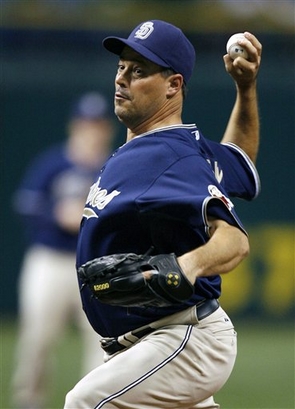
Greg Maddux
Greg MadduxFinally, above are two views of Greg Maddux from June 2007 showing how he keeps his elbows below the level of his shoulders during the act of Scapula Loading. Roger Clemens 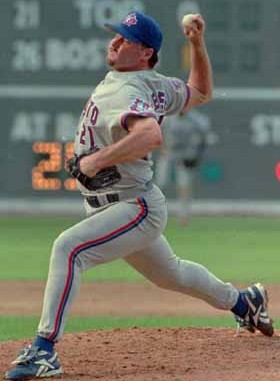
Roger ClemensNotice in the photo above, that while Roger Clemens' elbows are behind his back, they are also below the level of his shoulders during the process of Scapular Loading. 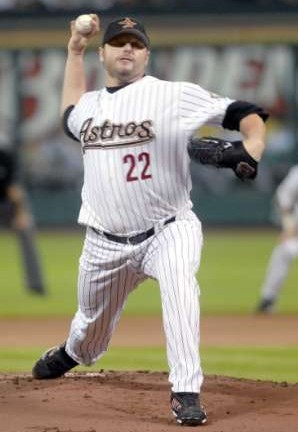
Roger ClemensYou can see the same thing in this more recent photo of Roger Clemens. His elbows are just behind his back but also just below the level of his shoulders. 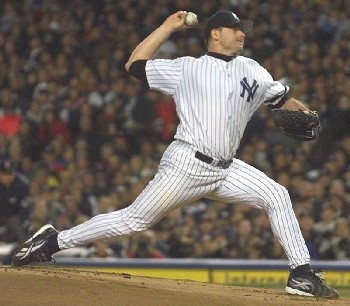
Roger ClemensIn this side view of Roger Clemens you can also see that while he is loading his scaps, his elbow never gets above the level of his shoulders. Tom Seaver 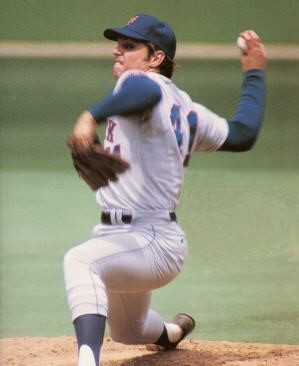
Tom SeaverNotice in the photo above of Tom Seaver that his PAS forearm is vertical but his PAS elbow is below the level of his shoulders during the process of Scapular Loading. The Dangerous Way
|
|
NOTE TO READERS While Tim Lincecum hasn't completely fallen apart, he has lost most of the velocity that made him both distinctive and effective. As it turns out, Tim Lincecum has a problem called the Inverted L, which explains where his velocity went. |
Mike Mussina
Mike Mussina has had a 17-year career, and I think that his
longevity is due in part to thing like his arm action and the fact
that he makes the "W".

Mike Mussina
Also, notice that he is showing the ball to 3B rather than to 2B/CF.
Roy Oswalt
I am a big fan of Roy Oswalt and his arm action in part because he makes
the "W".

Roy Oswalt
As the photo above of Roy Oswalt shows, as he loads his scaps he keeps his elbows below the level of his shoulders.
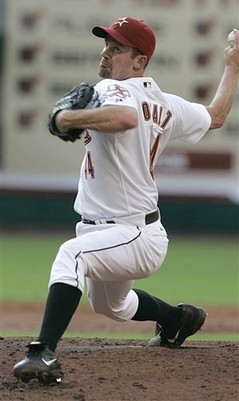
Roy Oswalt
You can see the same thing in the photo above of Roy Oswalt. As he loads his scaps, his elbows are below the level of his shoulders. Also, notice that he is showing the ball to 3B rather than to 2B/CF.
Justin Verlander
I have long liked the arm action of Justin Verlander, and
the photo below illustrates why.

Justin Verlander
Notice the pronounced "W" that he exhibits at the high-cocked position, with his elbows below the level of his shoulders. Also, notice that he is showing the ball to 3B rather than to 2B/CF.
Dontrelle Willis
I have some concerns about Dontrelle Willis' arm action,
because his PAS elbow gets a little high early on in his delivery.
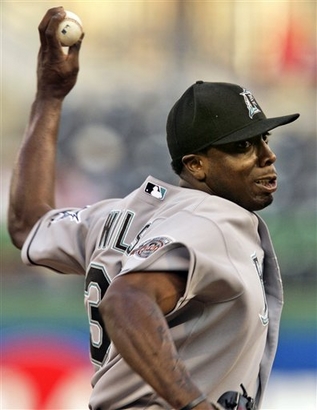
Dontrelle Willis
However, as the photo above shows, as his PAS forearm passes through the vertical high-cocked position and he loads his scaps, his elbows are below the level of his shoulders and his arms form more of "W" shape than an "M". Also, notice that he is showing the ball to 1B (since he's a lefty) rather than to 2B/CF.
Pitchers I am Worried About
Below are photos of and comments about pitchers who load their scaps in a way that I think increases the likelihood that they will have shoulder problems, especially if they are starting pitchers.
Aaron Heilman
Aaron Heilman is another pitcher with what I think is a
problematic arm action.
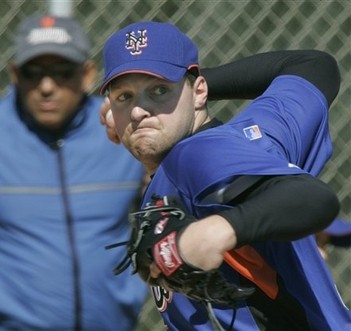
Aaron Heilman
As you can see in the photo above, Aaron Heilman's arm action is very similar to Billy Wagner's. Notice how high his PAS elbow gets relative to the level of his shoulders.
Anthony Reyes
If you are familiar with my work, you know that I have a low
opinion of
Anthony Reyes of the Cardinals. This is because Anthony
Reyes' arm action is very similar to Mark Prior's and he makes a
very pronounced "M". As a result, I expect that Anthony Reyes
will have many of the same problems as Mark Prior.
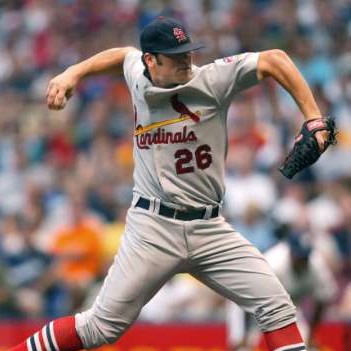
Anthony Reyes
The photo above shows that Anthony Reyes comes to the same "M" or Inverted W position as Mark Prior, with his PAS elbows both above and behind the level of his shoulders.
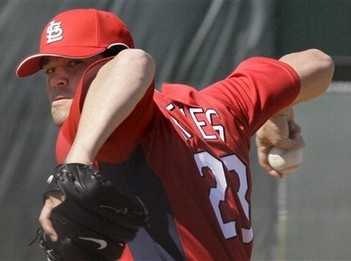
Anthony Reyes
You can see the same thing going on in the photo above of Anthony Reyes. Notice how high his PAS elbow is relative to the level of his shoulders.
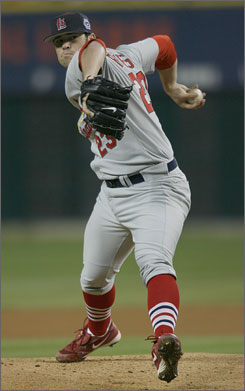
Anthony Reyes
You can see the same thing in the photo above of Anthony Reyes. Again, notice the height of his PAS elbow (and his PAS forearm hanging down vertically beneath it).

